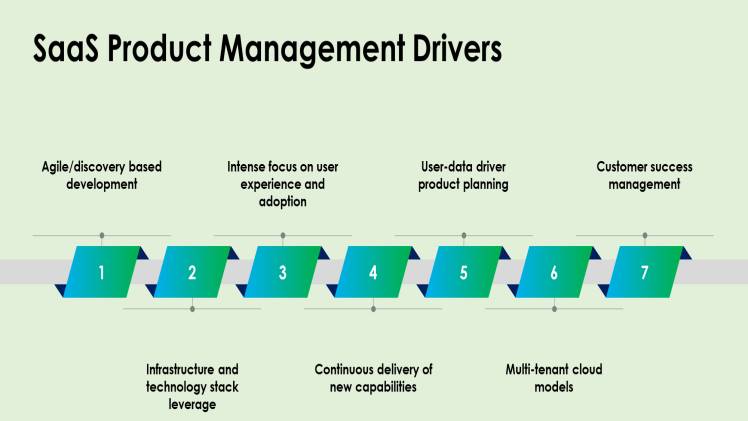What Is SAAS Product Management?

Introduction:
Most businesses employ SaaS applications across their entire organization for various tasks. Meaning of SaaS (Software as a service), or “on demand,” dates back to the 1970s. It became vital to provide software-as-a-service products so that businesses could afford to implement specific systems.
To put it mildly, the SaaS model has risen quickly in the product arena. Knowing how to manage solely conventional, on-premises software is no longer sufficient for product managers.
It’s simple to overlook that SaaS product management is a young and developing field.
Nearly all SaaS companies now claim to be “product-driven,” which has created a frenzy in product management.
With the passage of time and the growth of the internet, access to different software solutions has become more straightforward. The management of these software systems became crucial. The exponential growth of SaaS businesses in recent years is evidence of the corporate world’s dynamic technological landscape in earlier decades.
Given the nature of B2B SaaS, your customer will frequently review your offering, whether weekly, monthly or annually. Switching is now more straightforward. Differentiation becomes much more important for a PM.
The position of a product manager is exceedingly complex, ambiguous, and rife with potential conflicts. They are in charge of creating fantastic, market-differentiated products that customers adore.
It is now much more crucial to discover ways to manage them since many large corporations have shifted to SaaS and cloud operations. It has had an essential effect on the product market.
It serves as a reminder to get back to the fundamentals and ensure we tackle the moral issues to produce goods that customers adore.
An online piece of software that users with a license can access is essentially what a SaaS product is. Taking care of it involves a variety of duties. As a result, product management has varying connotations depending on the firm. According to studies, with proper execution, it is possible to boost profit by 34.2% with good product management.
SAAS Product Management: What Is It?
The process of directing the creation, introduction, promotion, and improvement of a company’s products during a product’s lifecycle is known as SaaS product management. The jobs include a mixture of professional, tactical, and strategic responsibilities.
Software-as-a-service (SaaS) product management describes cloud-based software that can be in use from any device with an internet connection and a web browser.
Because the subscription-based pricing model makes it much simpler for clients to switch products, SaaS product management differs from that of on-premise software.
The transition from point solutions or single-product offerings to more prominent platforms. Customers want to have fewer providers and more integrated solutions. It might manifest in new internal product developments or software purchases for established startups.
Professionals in product management must also sketch out the product vision. Create a plan based on your understanding of the product’s goals and the company’s plans. Goals, objectives, high-level conversations, and specific product information must all include in the vision.
Product managers must specify the needs and features of the product by studying market research and client input. It needs to be written into a plan for internal planning and shared with higher-level teams.
With the use of SaaS product management, the product owner can monitor product analytics to understand how users interact with an app and tailor the user experience in light of this information.
On-premise software has substantially lengthier release cycles than SaaS because users only upgrade yearly sporadically, necessitating more meticulous planning and less flexibility.
Important Stages:
-
Developing a Vision:
Product management includes a crucial component called product vision. It describes the finished product and demonstrates how it can be made. The product vision outlines the development, its goals, and other details. Idea management is the first step, during which the team brainstorms a new product based on the idea.
Here, a SaaS solution is created using ideation and competitor research.
A product manager sets the objectives to address essential queries.
-
Recognizing Customers:
Another element of successful product development is customer comprehension. Market research is the best way to gather data on a product while keeping customers in mind. Its basis is on contrasting comparable products, researching the competition, and examining target demographics.
To ensure that your original estimation is accurate—that the product will indeed have a sizable consumer demand base to market to and see a profit on the product—market research and understanding demand are crucial.
A product manager needs to understand their target market to develop user personas and determine customer needs in terms of quality, choice, affordability, and convenience.
-
Formulating a Plan:
Once the market and vision identify, a product strategy must be implemented. A particular product strategy specifies the product’s objectives, benchmarks, and roadmap. It lists the product’s primary features’ key performance indicators (KPIs), and users.
Once your product and market research finishes, the following step is to combine the people and necessary technology to make it a reality.
Finding the best talent and technology stack to complement their skills is also a part.
-
Developing a Product:
Understanding technical requirements, designing a mockup design, building prototypes, and other steps are the first steps in product development. The technical development team must know what users want as part of the product management process.
The minimum viable product must be established, and its release must be ensured as part of the product management process.
It includes agreement on server capacity, caching, and other back-end DevOps-related issues.
To ensure that the actual product and the cloud platform intended to host it are entirely compatible and in sync, the product manager often collaborates with both the DevOps and engineering teams.
-
Marketing and Sales:
It’s crucial to start thinking about product launches in the product management lifecycle.
The sales and marketing departments must develop the launch plan.
-
Tracking for Metrics:
It’s time to release the product into the market once it has reached the launch stage. Analyzing the data and keeping track of the development is crucial in this situation.
Subscription revenues are a fundamental statistic in SaaS product management. Simply selecting these measures is insufficient. The data must be followed up on, analyzed, and used to uncover meaningful insights.
-
Developing Product Upgrades:
The next stage is to focus on improving the product once the metric-based data is available. Making the required adjustments will significantly enhance the product’s prospects.
A talented SaaS Product manager is essential for developing a powerful SaaS product management team. A product manager will influence every part of the company.
For all of the reasons mentioned above, working with a successful B2B SaaS product manager who can handle all aspects of products is crucial.
Bottom Line:
Having the appropriate knowledge and insights to make the best product management decisions. SaaS product management will be able to make the best judgments with the help of this information and data.
Finding the correct market for your product requires a better analysis of user behavior.
One of the essential traits of a SaaS product manager is the ability to create limits and safeguard your mental welfare. Because a SaaS PM stands at the center of numerous moving parts, finding time for individual work might be challenging.
If you don’t have the energy and mental room to execute your best work, you can’t motivate a team toward product-market fit and create a successful SaaS company.



